Deltamethrin
Synonym(s):(S)-α-Cyano-3-phenoxybenzyl(1R)- cis-3-(2,2-dibromovinyl)-2,2-dimethylcyclopropanecarboxylate;(S)-α-Cyano-3-phenoxybenzyl(1R)-cis-3-(2,2-dibromovinyl)-2,2-dimethylcyclopropanecarboxylate;Deltamethrin - CAS 52918-63-5 - Calbiochem
- CAS NO.:52918-63-5
- Empirical Formula: C22H19Br2NO3
- Molecular Weight: 505.2
- MDL number: MFCD00870122
- EINECS: 258-256-6
- SAFETY DATA SHEET (SDS)
- Update Date: 2025-12-17 09:49:51
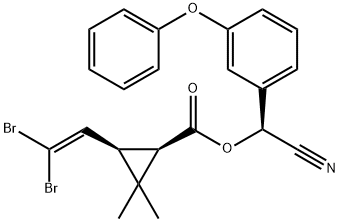
What is Deltamethrin?
Description
Deltamethrin is a kind of synthetic pyrethroids insecticide used worldwide in agriculture for home pest control and protection of foodstuff and disease vector control. Deltamethrin belongs to the type II pyrethroids, which is hydrophobic in nature. It kills the insects through producing severe delay in sodium channel inactivation, leading to a persistent depolarization of the nerve membrane without repetitive discharge. However, this pesticide can be contained in contaminated food and water, and is readily absorbed by the oral route. Recent studies have shown that it can have certain toxicity through inducing oxidative stress. Vitamin can be used to alleviate its toxicity.
Description
Deltamethrin is a type II pyrethroid insecticide and a modulator of voltage-gated sodium channels (Nav). It binds to Drosophila para Nav channels in a use-dependent manner following brief depolarizing prepulses and with increasing concentrations of 1 to 5 nM, indicating that it preferentially binds to the channel in the open state. It slowly activates Nav1.8 channels, delays inactivation by longer than 40 ms, and induces persistent tail currents for channels expressed in X. laevis oocytes. Deltamethrin decreases proliferation of MCF-7 cells and inhibits androgen receptor transactivation when used at concentrations of 10 and 20 μM or greater, respectively. However, it is not cytotoxic to MCF-7 and CHO cells at concentrations of 25 and 100 μM, respectively, and does not induce transactivation of the estrogen receptor. Deltamethrin is lethal to mice with an LD50 value of 50 mg/kg and at low sublethal doses of 0.05 and 0.1 mg/kg it induces histopathological changes in the liver, kidney, spleen, and testes, including a loss of spermatozoa and Sertoli cells.
Chemical properties
White Powder
Chemical properties
Colorless, white, or off-white crystalline solid or powder. Odorless. Combustible.
The Uses of Deltamethrin
Deltamethrin is effective against a wide range of insects in fruit, cereals, vegetables, cotton, soyabeans and oilseed rape. It is also used for the control of crawling and flying insects indoors, in stored grain and timber and for ectoparasite control on animals.
The Uses of Deltamethrin
Synthetic pyrethroid insecticide, which acts as a potent inhibitor of calcineurin (protein phosphatase 2B) and has an IC50 of about 100pM. This inhibition action results in cellular hyperexcitability by causing non-mutated calcium channels to remain open for an extended period of time allowing an abundance of Ca2+ to enter the cell.
The Uses of Deltamethrin
A Type II pyrethroid insecticide that potently inhibits calcineurin
The Uses of Deltamethrin
Insecticide.
What are the applications of Application
Deltamethrin is a Type II pyrethroid insecticide that potently inhibits calcineurin
Definition
ChEBI: A carboxylic ester obtained by formal condensation between 3-(2,2-dibromovinyl)-2,2-dimethylcyclopropanecarboxylic acid and cyano(3-phenoxyphenyl)methanol.
Contact allergens
Pyrethroids, also called pyrethrinoids, are neurotoxic synthetic compounds used as insecticides, with irritant properties. Cypermethrin and fenvalerate have been reported as causing positive allergic patch tests, but only fenvalerate was relevant in an agricultural worker.
Potential Exposure
Deltamethrin is a synthetic pyrethroid insecticide that kills insects on contact and through diges- tion. It is used to control a variety of chewing and sucking insects that infest fruit, vegetables and field crops, includ- ing apples, pears and plums; peas, glasshouse cucumbers, tomatoes, peppers, potted plants, and ornamentals; hops, oats, cotton and other field crops. Deltamethrin is also used to control residential and commercial insect pests. Some formulations are RUPs)
Environmental Fate
Deltamethrin is a type II pyrethroid, a functional neurotoxin slowing the inactivation of voltage-gated sodium channels leading to a state of hyperexcitability which in turn causes fine tremor, salivation, and choreoathetosis. Other proposed contributory actions include antagonism of gammaaminobutyric acid A receptor inhibition and voltage-gated chloride and calcium channels.
Metabolic pathway
After oral administration of 14C-deltamethrin to lactating dairy cows, deltamethrin is metabolized and excreted in the bile and urine with very little accumulation in major edible tissues. The major portion (78-82%) of the radioactivity in feces is deltamethrin. Only 4-6% is eliminated in the urine and 0.42 ? 1.62% is secreted in the milk. The primary biotransformation is via the hydrolysis of the ester linkage followed by oxidation of the geminal methyl groups of cyclopropane carboxylic acids and phenoxy benzaldehyde, resulting in dicarboxylic acid, lactonecarboxylic acid, or phenoxybenzoic acid derivatives. Deltamethrin is not metabolized within algae cells and mouse fibroblasts, but is partially transformed into less or not active isomers. In algae and fibroblast culture media, many metabolites of deltamethrin resulting mostly from hydrolysis of the molecule are found. This metabolism seems to be linked with the release of enzymes by cells into the culture medium.
Shipping
UN2811 Toxic solids, organic, n.o.s., Hazard Class: 6.1; Labels: 6.1-Poisonous materials, Technical Name Required.UN3349 Pyrethroid pesticide, solid toxic, Hazard Class: 6.1; Labels: 6.1-Poisonous materials.
Degradation
Deltamethrin is very stable as a solid but it is readily hydrolysed in solution
under alkaline conditions with a DT50 of 2.5 days at pH 9 (25 °C). By
analogy with cypermethrin, the rate-determining step in dilute solution is
nucleophilic attack by OH-.
Isomerisation has been shown to occur in natural waters under dark
conditions, yielding the inactive 1 ScisaS isomer (Maguire, 1992). Aqueous
photolysis (sunlight) causes slow degradation but also isomerism to the
insecticidally active 1RtransaS form. These isomerisation reactions, which
are more rapid than those of cypermethrin, were reported much earlier by
Ruzo et al. (1977). This is due to the heavy atom effect (bromine).
Similarly, the decreased bond strength of C-Br (ct C-Cl) leads to photocatalysed
reductive debromination, with tans- favoured over cisdebromination
by a factor of 4. The DT50 on soil photolysis is 9 days (PM).
Photolysis of the ester bond is the main reaction of deltamethrin.
Solvent effects are important. cis-3-(2,2-Dibromovinyl)-2,2-dimethylcyclopropanecarboxylic
acid (2) and 3PBA (4) are the major products in
water (Scheme 1). A minor product (5) was formed by decarboxylation.
Deltamethrin is resistant to photo-oxidation. The mechanisms of photodegradation of the pyrethroids have been reviewed by Ruzo (1982).
Toxicity evaluation
Deltamethrin is twofold more persistent in aquatic environments than in soil. Depending on conditions the environmental half-life ranges from 2 days (for hydrolysis at pH 9) to 80 days (for degradation in an aquatic environment).
Incompatibilities
May react violently with strong oxidi- zers, bromine, 90% hydrogen peroxide, phosphorus trichloride, silver powders or dust. Incompatible with silver compounds. Mixture with some silver compounds forms explosive salts of silver oxalate.
Waste Disposal
ncineration would be an effective disposal procedure where permitted. If an efficient incinerator is not available, the product should be mixed with large amounts of combustible material and contact with the smoke should be avoided. In accordance with 40CFR165, follow recommendations for the disposal of pesticides and pesticide containers.
References
Adams, A. J. "A review of the efficacy and uses of deltamethrin for wood preservation." Document - the International Research Group on Wood Preservation (Sweden) (1996).
Sayeed, I, et al. "Oxidative stress biomarkers of exposure to deltamethrin in freshwater fish, Channapunctatus Bloch." Ecotoxicology & Environmental Safety 56.2(2003):295-301.
Yousef, Mokhtar I., T. I. Awad, and E. H. Mohamed. "Deltamethrin-induced oxidative damage and biochemical alterations in rat and its attenuation by Vitamin E." Toxicology 227.3(2006):240-247.
Properties of Deltamethrin
| Melting point: | 98°C |
| Boiling point: | 300°C |
| alpha | +56~+64°(20℃/D)(c=4,C6H6) |
| Density | 1.5214 (rough estimate) |
| vapor pressure | 1.24×10-2Pa (25 °C) |
| refractive index | 1.6220 (estimate) |
| Flash point: | -18 °C |
| storage temp. | −20°C |
| solubility | Soluble in DMSO (up to 50 mg/ml) |
| Water Solubility | <0.0002 mg l-1 (25 °C) |
| form | Crystalline |
| color | Colorless |
| λmax | 278nm(Hexane)(lit.) |
| Merck | 14,2883 |
| BRN | 6746312 |
| Stability: | Stable. Incompatible with acids, alkalies, strong oxidizing agents. |
| NIST Chemistry Reference | Deltamethrin(52918-63-5) |
| IARC | 3 (Vol. 53) 1991 |
| EPA Substance Registry System | Deltamethrin (52918-63-5) |
Safety information for Deltamethrin
| Signal word | Danger |
| Pictogram(s) |
 Skull and Crossbones Acute Toxicity GHS06  Environment GHS09 |
| GHS Hazard Statements |
H410:Hazardous to the aquatic environment, long-term hazard |
| Precautionary Statement Codes |
P261:Avoid breathing dust/fume/gas/mist/vapours/spray. P264:Wash hands thoroughly after handling. P264:Wash skin thouroughly after handling. P270:Do not eat, drink or smoke when using this product. P273:Avoid release to the environment. P301+P310:IF SWALLOWED: Immediately call a POISON CENTER or doctor/physician. |
Computed Descriptors for Deltamethrin
Deltamethrin manufacturer
Angel Crop Science
Vetbiochem India Private Limited
New Products
Indole Methyl Resin tert-butyl 9-methoxy-3-azaspiro[5.5]undecane-3-carboxylate Boc-His(Boc)-OH 2-CTC Resin 4-Chloro-7-tosy1-7Hpyrrolo[2,3-d]pyrimidine 5,7-Dibromo-1H-indole 2,5-dichloro-N-hydroxy-4,6-dimethylpyridine-3-carboximidamide 2,2-Dimethoxy-7-azaspiro[3.5]nonane hydrochloride 4-chloromethyl-5-methyl-1,3-dioxol-2-one (DMDO-Cl) R-2-BENZYLOXY PROPIONIC ACID 1,1’-CARBONYLDIIMIDAZOLE 1,1’-CARBONYLDI (1,2-4 TRIAZOLE) N-METHYL INDAZOLE-3-CARBOXYLIC ACID 4-((2-hydroxyethyl)thio)benzoic acid 1-(TERT-BUTOXYCARBONYL)-2-PYRROLIDINONE Methyl 6-methylnicotinate 3-Pyridineacrylic acid tert-Butyl carbazate TETRAHYDRO-2H-PYRAN-3-OL 2-((4-morpholinophenylamino) (methylthio) methylene) malononitrile 3-(4-morpholinophenylamino)-5-amino-1H-pyrazole-4-carbonitrile 2,4-dihydroxybenzaldehyde 1,3-Diethyl-1,3-Diphenylurea Methyl 2-methylquinoline-6-carboxylateRelated products of tetrahydrofuran

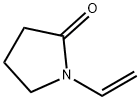

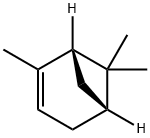

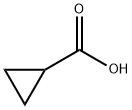
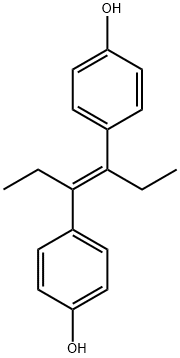

You may like
-
 Cyano(3-phenoxyphenyl)methyl 3-(2,2-dibromovinyl)-2,2-dimethylcyclopropanecarboxylate 95% CAS 52918-63-5View Details
Cyano(3-phenoxyphenyl)methyl 3-(2,2-dibromovinyl)-2,2-dimethylcyclopropanecarboxylate 95% CAS 52918-63-5View Details
52918-63-5 -
 Powder Deltamethrin Technical Chemical, 25KGView Details
Powder Deltamethrin Technical Chemical, 25KGView Details
52918-63-5 -
 Deltamethrin Compound API MANUFACTURER INDIAView Details
Deltamethrin Compound API MANUFACTURER INDIAView Details
52918-63-5 -
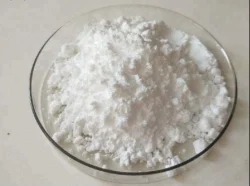 Powder Deltamethrin Technical, 25 KgView Details
Powder Deltamethrin Technical, 25 KgView Details
52918-63-5 -
 Delta methrin 2.5, 100 ML To 5 Liter, Aluminium BottleView Details
Delta methrin 2.5, 100 ML To 5 Liter, Aluminium BottleView Details
52918-63-5 -
 White Deltamethrin Powder Technical Grade, 25-50 Kg, Packaging Type: BagView Details
White Deltamethrin Powder Technical Grade, 25-50 Kg, Packaging Type: BagView Details
52918-63-5 -
 Deltamethrin 2.8 Percentage Ec SolutionsView Details
Deltamethrin 2.8 Percentage Ec SolutionsView Details
52918-63-5 -
 Liquid Deltamethrin 11 Ec, 500 gm, BottleView Details
Liquid Deltamethrin 11 Ec, 500 gm, BottleView Details
52918-63-5
